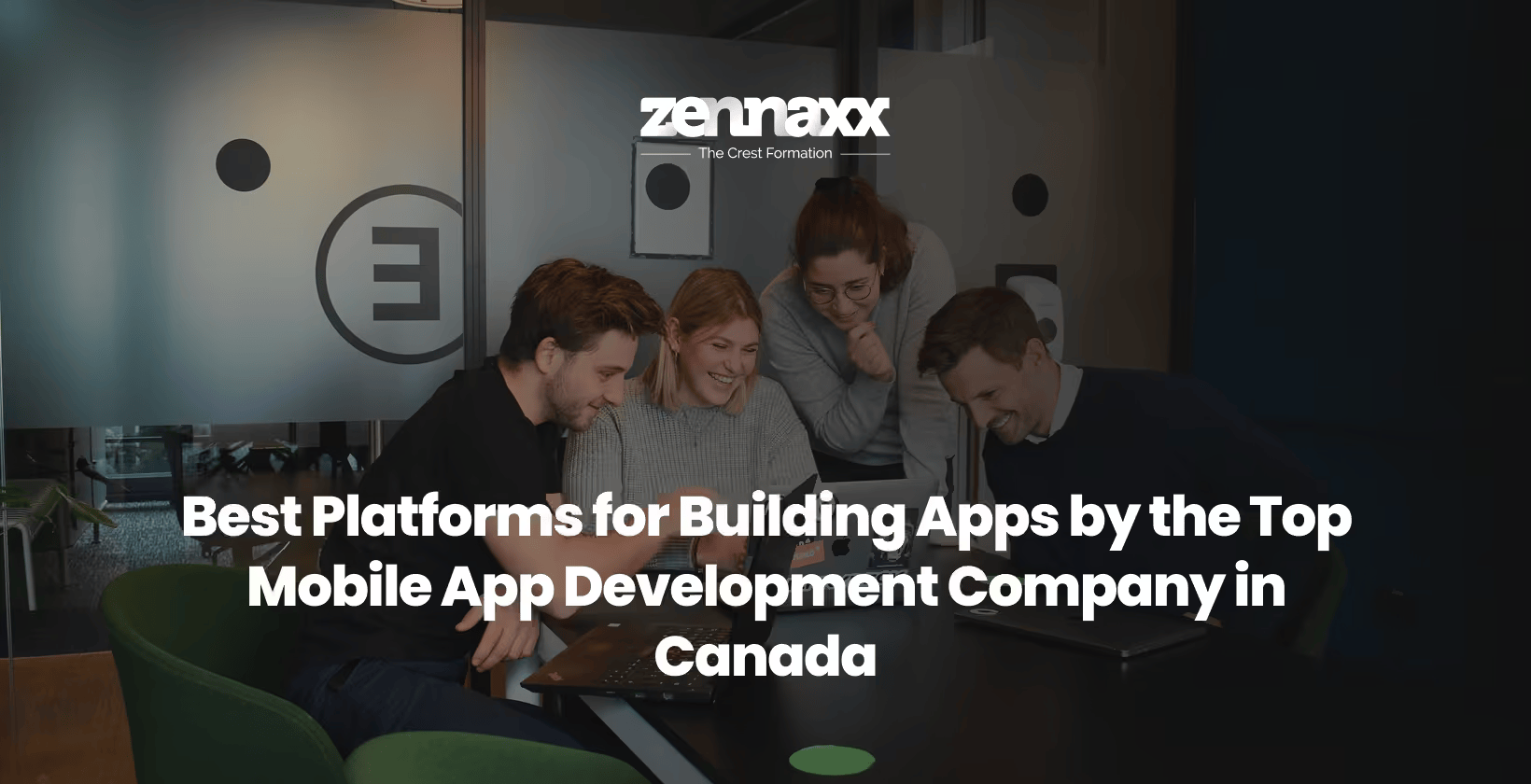
The types of mobile apps are categorized based on their functionality, purpose, and development approach, providing clarity on their distinct features and uses. There are 4 main types of mobile apps such as web apps, progressive web apps (PWA), native apps and hybrid apps. The other types of mobile apps include Cross-Platform Mobile Apps, Cloud-Based Apps, Specialized Device Apps and Extended Reality (XR) Apps. Gaming apps are the most common category, accounting for 21% of all mobile app downloads. IoT device apps account for less than 5% of downloads due to their niche audience and reliance on specific hardware, which makes IoT apps one of the least popular categories. Android apps dominate the market, contributing to 70% of total app downloads globally, highlighting their platform-specific popularity.
The development process is not the same for all mobile apps, as each mobile type has different requirements due to its platform, functionality, and target users.
Listed below are the 4 main types of mobile apps, each explained with their unique features.

- Web Apps: Web apps designed for cross-platform compatibility, eliminating the need for installation while offering responsive performance.
- Progressive Web Application: A Progressive Web Application (PWA) is a web-based app that feels and functions like a native mobile app, offering offline access, push notifications, and installability.
- Native Apps: Native apps are built for a single platform, such as Android or iOS, with high performance, full access to device features, and seamless functionality.
- Hybrid Apps: Hybrid apps combine native and web functionalities, delivering cross-platform support with partial access to device hardware features.
1. Web Applications
A Web application is a browser-based software program accessed via the internet that offers platform-independent functionality without device installation. The unique features of these applications include cross-platform accessibility, automatic updates, responsive design, reduced storage requirements, and API integration.
Web applications are developed using core web languages such as HTML for structuring content, CSS for design and styling, and JavaScript for interactivity and dynamic functionality. Web application development includes front-end frameworks such as Angular or Vue.js, while Node.js, Django, Ruby on Rails, ASP.NET, or Laravel are used for back-end development.
Web applications are ideal for centralized data management, real-time updates, and broad accessibility, such as e-commerce platforms, online collaboration tools, and educational services.
Examples of web application usage include Gmail for email, Google Docs for document editing, Slack for team collaboration, Canva for graphic design, and Trello for project management. Web applications offer accessibility on any device with a browser, scalability for growing users, and cross-platform compatibility across various operating systems. Web applications require a stable internet connection, have limited access to device-specific features, and may experience performance variations across browsers and devices.
2. Progressive Web Applications
A Progressive Web Application (PWA) is a web app that uses modern web capabilities to deliver an app-like experience, including offline functionality, push notifications, and home screen installation. Progressive Web Application (PWA) combines the best features of websites, including fast loading times, responsive design, and secure HTTPS connections, with the features of mobile apps, such as offline access, push notifications, and the ability to be installed on a device’s home screen. Progressive Web Applications offer uninterrupted performance across platforms, including modern web browsers such as Chrome, Edge, Firefox, Safari, Opera, Android and iOS mobile devices while maintaining the reach and flexibility of the web.
Progressive Web Applications (PWA) are developed using standard web languages such as HTML, CSS, and JavaScript. Developers use frameworks such as Angular, React, and Vue.js, along with tools including Service Workers and Web App Manifests, to create offline functionality, caching, and app-similar features.
Progressive Web Applications (PWAs) are ideal when you need fast, reliable, and engaging user experiences across devices without app store downloads. The PWS apps are particularly useful for e-commerce platforms for offline browsing, news websites with push notifications, and productivity tools such as task managers accessible on desktop and mobile. These web applications offer advantages in cross-platform compatibility, offline functionality, and fast performance without app store approval. These web applications have limitations, specifically reduced support for iOS features, limited hardware access compared to native apps, and potential browser dependency.
3. Native Applications

A Native application is a software program specifically built for operating systems, including iOS, Android, or Windows, using native tools and APIs such as Swift and Xcode for iOS, Kotlin and Android Studio for Android, and C# and Visual Studio for Windows. Native applications offer high performance, consistent hardware integration, offline functionality, and platform-specific features. These applications have a faster response time and improved reliability than web applications. Native applications are often preferred for tasks that require intensive processing or real-time interactions. These apps are supported on platforms such as the iOS App Store, Android Google Play, and Windows Microsoft Store.
Native applications are developed using platform-specific programming languages, e.g., Swift and Objective-C for iOS and Kotlin and Java for Android. The native apps rely on frameworks such as UIKit, SwiftUI, Android SDK, and Jetpack that offer the necessary tools and APIs for app development.
Native apps are designed for high-performance operations to support hardware integration (for example, access to device sensors such as GPS and accelerometers) and platform-specific features (for example, iOS widgets and Android’s split-screen multitasking). These applications are ideal for resource-intensive applications such as gaming, augmented reality (AR), and video editing. Native applications offer high performance, platform-specific features, and efficient hardware integration but require higher development costs and separate codebases for each platform.
Android Apps
An Android application is developed for the Android operating system, which runs on smartphones, tablets, smart TVs, and wearables and supports multiple device manufacturers, including Samsung, Google Pixel, and OnePlus. The unique features of Android applications include an open-source ecosystem, multi-device compatibility, and deep integration with Google services such as Google Maps, Google Assistant, and Firebase. Android apps support multitasking, split-screen functionality, and extensive customization, making them ideal for users seeking flexibility and personalization.
The platforms supporting Android applications include the Google Play Store as the distribution channel, and apps are also installed via APK files or alternative stores like Samsung Galaxy Store and Huawei AppGallery. The languages used for Android applications include Kotlin and Java. The frameworks used for Android applications are Jetpack Compose for UI development, WorkManager for background processing, and Android SDK for system integration.
The best use for Android applications includes social media apps, on-demand services, gaming, and AI-driven applications that require flexibility, deep customization, and large-scale adoption. Examples of Android applications include WhatsApp, Google Chrome, YouTube, Uber, and Spotify; each application utilizes Android’s open ecosystem, multi-device support, and seamless Google integration. The advantages of Android applications include wider market reach, flexible customization, and a more straightforward app publishing process. Android applications face challenges, including device fragmentation, increased security risks, and longer optimization time due to hardware and OS version variations.
iOS Apps
An iOS application is a software program designed exclusively to run on Apple devices, including iPhones, iPads, and Apple Watches. These apps ensure high performance, strong security, and simple integration within Apple’s ecosystem. The features of iOS applications include highly optimized performance, strict security policies, and deep integration with Apple services such as iCloud, Face ID, and Siri.
The platforms supporting iOS applications include the Apple App Store, the only official marketplace for iOS app distribution. The languages used to develop iOS applications include Swift and Objective-C, using Xcode as the Integrated development environment( IDE ). iOS applications use frameworks such as SwiftUI for UI design, CoreML for machine learning integration, and UIKit for interface development.
The best use for iOS applications includes finance apps, health and wellness applications, high-performance games, and enterprise solutions that require strict security, premium user experience, and optimized resource management. Examples of iOS applications include Apple Music, iMessage, FaceTime, Safari, and Instagram. The advantages of iOS applications include better security, higher revenue potential, and optimized performance due to Apple’s controlled ecosystem. iOS applications have limitations, such as higher development costs, limited customization options, and a strict app approval process.
4. Hybrid Applications
A hybrid application is a software program that combines elements of both native applications and web applications. Hybrid applications are designed to run on multiple platforms (such as Android, iOS, and desktop operating systems) using a single codebase. These applications access native device features (camera, GPS, contacts) while utilizing web technologies (HTML, CSS, JavaScript) for the user interface. These applications run across multiple operating systems including iOS, Android, Windows, and macOS through a unified codebase. The cross-platform frameworks and web technologies used in hybrid apps ensure consistent functionality across mobile devices, tablets, desktop computers, and web browsers.
Hybrid applications are built using web-based technologies such as HTML5 for structure, CSS3 for styling, and JavaScript for functionality and logic. Hybrid applications are primarily developed using programming languages such as JavaScript, TypeScript, and Dart. Cross-platform frameworks like Ionic (which uses JavaScript/TypeScript with Angular), React Native (which uses JavaScript/TypeScript with React), and Flutter (which uses Dart) convert web-based code into native-like applications and provide access to device features through APIs.
Hybrid applications are ideal for businesses seeking cost-effective, cross-platform solutions with rapid development cycles and consistent user experiences. Examples of Hybrid applications include social media platforms such as Instagram, ride-sharing services such as Uber, and news applications that demand instant content updates, steady cross-platform access, and integration with native device features. Users sometimes face performance limitations and reduced customization while using hybrid apps as compared to fully native apps.
What are the other types of mobile apps?
Other types of mobile applications include cross-platform mobile apps, cloud-based apps, specialized device apps, and extended reality applications. These apps address specific functionalities, such as real-time data processing or hardware-specific controls, rather than the broader functionalities, including cross-platform compatibility or general user accessibility covered by primary mobile applications.
Listed below are the other types of mobile applications.
- Cross-Platform Mobile Apps
- Cloud-based Apps
- Specialized Device Apps
- Wearable Device Apps
- Smart TV Apps
- IoT (Internet of Things) Apps
- Extended Reality (XR) Applications
- Augmented Reality (AR) Apps
- Virtual Reality (VR) Apps
Cross-Platform Mobile Apps
The cross-platform mobile application is developed to run on multiple operating systems, including Android and iOS, using a single codebase. Cross-platform applications reduce development time and costs by enabling developers to write code once and deploy it across multiple platforms. The unique features of cross-platform mobile applications include code reusability, cost efficiency, and faster development cycles.
Cross-platform mobile applications are compatible with platforms like the Google Play Store and Apple App Store, enabling a wider audience to benefit from their features and accessibility. The languages used for cross-platform mobile applications include Dart, JavaScript, and C#, while the frameworks used include Flutter, React Native, and Xamarin.
The best use for cross-platform mobile applications includes e-commerce platforms, social networking apps, enterprise applications, and content-based applications that require multi-platform availability with minimal development effort. Examples of cross-platform mobile applications include Facebook, Instagram, Skype, Airbnb, and Pinterest. The advantages of cross-platform mobile applications include reduced development costs, faster time to market, and easier maintenance, which makes these applications an efficient choice for businesses looking to scale across multiple platforms. Cross-platform applications face challenges, such as performance limitations, limited access to native features, and potential UI inconsistencies compared to native applications.
Cloud-Based Apps
A cloud-based application operates through web browsers or lightweight client interfaces relying on remote servers to store, process, and manage data. According to Statista, the global cloud application market will reach $168.6 billion by 2025, which reflects the growing popularity of cloud-based apps across various industries. Cloud-based apps include frontend user interaction interfaces, backend services hosted on cloud servers, and communication APIs for database management.
Cloud-based apps are developed using specific programming languages, frameworks, and cloud service tools. Developers use programming languages such as JavaScript, Python, Java, Ruby, and PHP to write the core application code of Cloud-based apps. Frameworks such as Node.js and Django are used to build and manage the backend of cloud-based apps. React is a UI framework commonly used to develop responsive and interactive front-end user interfaces of cloud apps. Service tools such as AWS SDK, Google Firebase, and Microsoft Azure enable seamless integration with cloud servers for hosting, data storage, and processing. Popular examples of cloud-based applications include Google Drive, Slack, Zoom, Dropbox, and Microsoft Teams.
Specialized Device Apps
The specialized device applications are developed for wearables, smart TVs, and IoT devices; these applications offer enhanced functionality, real-time data processing, and simple device integration. Specialized device applications provide optimized user experiences by providing sensor-based tracking, cloud connectivity, and AI-driven automation across various industries, including healthcare, entertainment, and home automation.
Wearable Device Apps
A wearable device application is designed for smartwatches, fitness trackers, and AR/VR headsets, providing health tracking, real-time notifications, and hands-free interaction. The wearable technology market was valued at $61.3 billion in 2022 and is projected to reach $186.1 billion by 2030 (Statista, 2023). Over 500 million wearable devices in use worldwide, wearable applications are increasingly adopted in health tracking, fitness monitoring, and innovative assistant functionalities.
The components of wearable device apps include sensors for health monitoring, connectivity modules for device synchronization, voice controls for hands-free operation, real-time notifications, and battery optimization for extended usage. The unique features of wearable device apps include advanced health tracking, simple connectivity, hands-free accessibility, and compact UI design optimized for small screens.
Wearable device applications are developed using languages such as Kotlin and Java for Wear OS, Swift for watchOS, and C for Tizen OS. The frameworks for wearable device applications include Wearable API (Android), WatchKit (iOS), and Tizen SDK (Samsung), which enable developers to create efficient applications for small screens and real-time interactions. Examples of wearable device apps include Google Fit, Apple Health, Strava, Spotify for Wear OS, and Samsung Health.
Smart TV Apps.
A smart TV application is designed for internet-connected televisions, providing users with on-demand streaming, interactive entertainment, and live broadcasting. Smart TV applications integrate with voice assistants, remote controls, and cloud-based media services to enhance the overall viewing experience. The global smart TV market is expected to reach $450 billion by 2027, with over 1.1 billion smart TVs in use worldwide (Statista, 2023).
The components of smart TV apps include a streaming engine for media playback, remote control support for navigation, cross-platform synchronization, and ad-supported or subscription-based revenue models. The features of smart TV apps include 4K and HDR streaming, AI-driven content recommendations, multi-device integration, and interactive media services.
Smart TV applications are built using languages Kotlin and Java for Android TV, Swift for tvOS, and JavaScript for web-based TV apps. The frameworks used for smart TV applications include Android TV SDK, tvOS SDK, and Roku SceneGraph to ensure simple media playback across different smart TV brands. Examples of smart TV apps include Netflix, YouTube, Amazon Prime Video, Disney+, and Hulu, providing on-demand streaming, interactive features, and multi-device synchronization.
IoT (Internet of Things) Apps
IoT application connects smart devices, sensors, and cloud platforms for automation, remote control, and real-time monitoring. The global IoT market was valued at $478 billion in 2022 and is projected to exceed $2.4 trillion by 2030 (Statista, 2024). Over 75 billion IoT devices are expected by 2025, and the demand for innovative applications continues to expand across home automation, healthcare, and industrial sectors.
The components of IoT apps include device sensors for data collection, cloud-based connectivity for remote access, AI-driven automation for predictive analysis, and cybersecurity protocols for data protection. The unique features of IoT apps include real-time device monitoring, remote control capabilities, AI-driven automation, and cloud integration.
The development of IoT apps requires specialized programming languages, cloud integration, and security protocols. IoT applications are built using Python, C, and Java, while frameworks like Google Firebase for IoT, AWS IoT Core, and IBM Watson IoT enable device communication and data analytics. Examples of IoT apps include Google Nest, Amazon Alexa, Tesla App, Philips Hue, and SmartThings, each designed to enhance home automation, smart car functionality, and industrial IoT solutions.
Extended Reality (XR) Applications
Extended Reality (XR) applications include Augmented Reality (AR) and Virtual Reality (VR) and create immersive digital experiences that blend the physical and virtual worlds. Extended reality applications are widely used in gaming, healthcare, education, retail, and industrial training to change how users interact with digital content.
Augmented Reality (AR) Apps
Augmented Reality (AR) application overlays digital elements onto the real-world environment and enhances user experiences through interactive visuals, real-time data overlays, and 3D object integration. AR apps are used in gaming, shopping, navigation, and healthcare, allowing users to interact with virtual objects in a real-world setting. The global AR market was valued at $38.6 billion in 2023 and is projected to reach $461 billion by 2030 (Statista, 2024).
The components of AR apps include camera integration, motion tracking, AI-powered object recognition, and real-time data processing. The features of AR applications include real-world interaction, spatial mapping, 3D object integration, and AI-powered enhancements.
AR applications are built using languages Swift and Objective-C for iOS AR apps, Kotlin and Java for Android AR apps, and C# for cross-platform development. The frameworks used for AR applications include ARKit (iOS), ARCore (Android), and Vuforia for cross-platform AR development. Examples of AR applications include Pokémon GO, IKEA Place, Snapchat AR Lenses, Google Lens, and Apple Measure, each utilizing real-time object tracking, interactive overlays, and AI-powered recognition technology.
Virtual Reality (VR) Apps.
Virtual Reality (VR) application creates fully immersive digital environments and allows users to interact with 3D simulations using VR headsets, motion controllers, and spatial audio. VR apps are used in gaming, training simulations, healthcare, and real estate to provide users with interactive and lifelike virtual experiences. The global VR market was valued at $37 billion in 2023 and is expected to exceed $500 billion by 2030 (Statista, 2024).
The components of VR apps include 3D rendering engines, motion tracking, spatial audio, and AI-driven simulation tools. The features of VR applications include complete immersion, interactive 3D environments, hand-tracking, and haptic feedback integration.
VR applications are built using languages such as C++ and C# for high-performance VR development, supported by frameworks like Unity3D, Unreal Engine, and WebVR for web-based VR applications. Examples of VR applications include Beat Saber, Google Earth VR, Oculus Venues, Tilt Brush, and VRChat; each application is designed to deliver immersive 3D experiences in gaming, exploration, and social interaction.
What are the differences between Cloud-Based Apps, Specialized Device Apps, Gaming and Entertainment Apps, and Immersive Technology Apps?
Is the development process the same for all types of mobile apps?
No, the mobile app development process is not the same for all types of mobile apps. Each app type, such as gaming, immersive, or platform-specific apps, has unique requirements based on the target platform (e.g., Android, iOS), app complexity, security needs, user interface design, and features that significantly influence the development approach. Native, hybrid, and web apps differ in their development requirements as native apps use platform-specific tools including Xcode or Android Studio, and hybrid or cross-platform apps use frameworks including Flutter or React Native. Each type of application demands specific testing methods and optimization strategies to meet its purpose and target audience effectively.
What is the typical timeframe for creating a mobile app?
The typical timeframe for creating a mobile app usually takes between 6 to 9 months depending on the mobile application’s scale. Small-scale mobile apps, such as to-do lists or calculators with basic features usually take 2 to 3 weeks to develop. Mid-size apps, such as fitness trackers or food delivery services with moderate complexity usually require 5 to 6 weeks for development. Large-scale apps, such as e-commerce platforms or social media applications like Amazon or Instagram with complex features, generally need 9 to 10 weeks for complete development and deployment.
What type of expertise is required to develop mobile applications?
Mobile application development demands an understanding of important programming languages such as Swift, Kotlin, and JavaScript, as well as an understanding of platform software development kits such as the iOS SDK and Android SDK. Developers require additional expertise in backend programming, database administration, API integration, security implementation, and cross-platform frameworks. These combined skills allow for the creation and implementation of high-quality mobile applications.
What are popular frameworks used for mobile application development?
Popular mobile app development frameworks are Flutter, React Native, Xamarin, and Ionic, which are widely adopted for their efficiency and versatility in creating high-quality apps.
What programming languages are used to develop mobile applications?
The main programming languages used to develop mobile applications are Swift and Objective-C for iOS, Kotlin and Java for Android, and mainly JavaScript for cross-platform development.
